
Why does hair color sometimes change with age?
May 22, 2018

- Related Topics:
- Complex traits,
- Environmental influence,
- Gene expression,
- Hair color,
- Pigmentation traits,
- Aging
A middle school student from the US asks:
Hair and eye color are mostly determined by our genes. But it’s not just by the genes we have, but also by whether those genes are turned on or turned off. And since genes can turn on and off throughout our lives, this means your hair color can change!
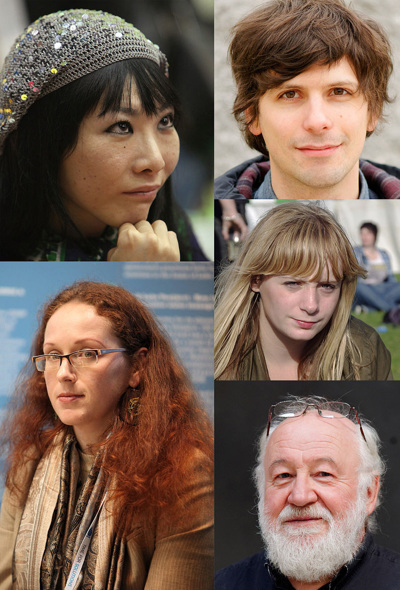
The most important genes here are ones that make pigment, which is what gives hair its color.
The name of this pigment is melanin. It’s the same pigment that gives skin its color!
This melanin pigment is made by special cells called melanocytes. These cells live at the bottom of each strand of hair. When these cells make a lot of melanin, your hair turns brown or black. If these cells don’t make much melanin, your hair turns blonde.
There are two types of melanin: eumelanin and pheomelanin. We all have genes to produce both pigments. The amount of eumelanin pigment determines how dark our hair is. The amount of pheomelanin pigment determines how red our hair is.
Genes are the instruction manuals for cells, and just like anything else our cells can do, there are genes that have the instructions for making melanin. All cells in your body have the gene for melanin. But not all cells are using this instruction manual!
For example, the cells on your palms and bottom of your feet don’t need to make melanin. In these cells, the melanin genes are “turned off.” This is why these parts of your skin are lighter than everywhere else. They just aren’t using the pigment genes.
The genes for making melanin might turn on or off over the course of a person’s lifetime. If this happens in the cells at the bottom of your hairs, your hair might change color!
Different genes control the levels of eumelanin and pheomelanin produced by melanocytes.
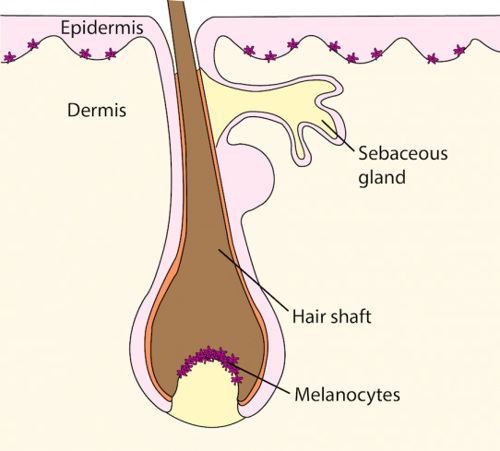
But what causes these genes to be turned on or turned off?
Many different factors can turn hair pigment genes on and off. These factors are not even completely understood by scientists.
Changes in hair color in kids and teenagers are most likely due to changing hormones. Hormones are chemical signals that the body uses to send messages between body parts. Changes in hormone levels can cause pigment genes to be turned on or turned off.
This can happen in adults too! Hormonal changes aren’t limited to puberty. Changes in age, nutrition, temperature, sun exposure and various other factors can cause our bodies to change the amounts or types of hormones we make.
The genes for making melanin might turn on or off over a lifetime, causing your hair color to change.
Some animals change their hair color twice a year! Snowshoe hares are pure white in the winter, which helps them hide in the snow. But in the summer, they switch to a darker coat. This means they are camouflaged all year.
These seasonal changes are also regulated by hormones. Shorter days stimulate more production of a particular hormone, and causes winter coat colors. Longer days lead to less of the hormone, and causes summer coat colors.
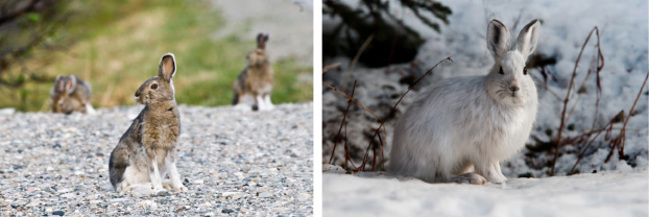
What else can change hair color?
Our hair color can change in ways unrelated to our genes! Harsh chemicals such as bleach and chlorine can change the chemical makeup of our hair. This can make our hair change colors!
When you go to the salon or bleach your hair at home you are exposing your hair to very reactive chemicals. The main ingredient in hair bleach is hydrogen peroxide. Have you ever gotten a nasty cut and put hydrogen peroxide on it and felt a stinging sensation? That’s because the hydrogen peroxide is reacting with the water in your blood.
When you put hydrogen peroxide on your hair, it reacts with the melanin pigments and makes them colorless. Hydrogen peroxide reacts faster with eumelanin than pheomelanin. That’s why after you bleach your hair, your hair might be orange.
Have you ever spent the entire summer in the pool and have your hair turn green? This is from the chlorine in the pool water. Chlorine is also a very reactive chemical and will react with the copper pipes that flow water in and out of the pool. Chlorine is so reactive that it will dissolve some of that copper into the pool water. When that copper gets on your hair your hair will turn green!
What happens when we age?
When we age our hair eventually turns gray and sometimes white. This occurs because our melanocytes (the cells that make melanin) wear out.
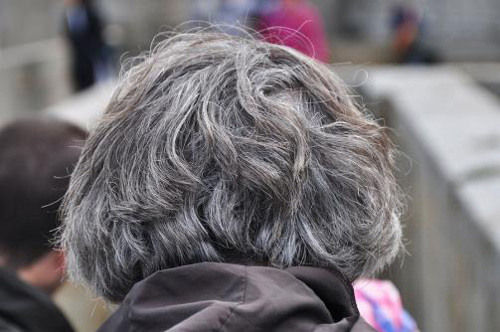
When melanocytes wear out, they aren’t as good at passing the pigment on to the cells that make hair. If this pigment isn’t passed on correctly, it doesn’t get included in the new hair. A hair that gets only a little pigment is gray, while a hair that doesn’t get any pigment is white.
Melanocytes can also die. When we’re young, they get replaced by new ones. But as we get older, our cells aren’t as good at dividing and making new cells. If a melanocyte isn’t replaced, the hairs in that area won’t get any pigment and will turn white.
And since our hair gets its color from the cells on our heads, this means it doesn’t help to pull out those gray hairs. The new hair that grows in will be gray too!
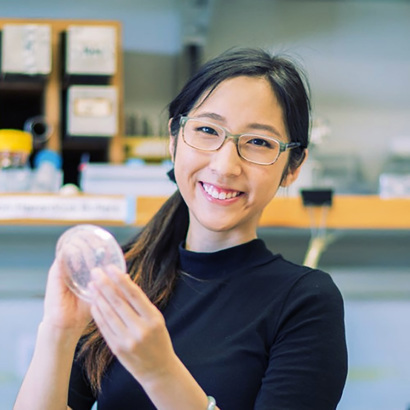
Author: Trisha Chong
When this answer was published in 2019, Trisha was a Ph.D. candidate in the Department of Developmental Biology, studying spatiotemporal protein localization in bacteria in Lucy Shapiro's laboratory. She wrote this answer while participating in the Stanford at The Tech program.
 Skip Navigation
Skip Navigation
